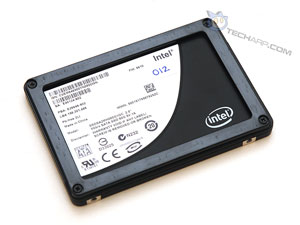Intel SSDs
 |
Intel is one of the world's leading manufacturers of solid state drives (SSDs) and NAND flash memory chips - the very foundation of solid state drives and USB flash drives. They currently offer three lines of solid state drives :
- Intel X25-E Extreme SSDs
- Extreme performance and reliability for servers, storage and workstations
- Intel X25-M Mainstream SSDs
- High-performance 2.5" SSDs for laptops
- Intel X18-M Mainstream SSDs
- High-performance 1.8" SSDs for netbooks
The Intel Mainstream series of 2.5" SSDs feature a native SATA interface with support for Native Command Queueing (up to 32 concurrent operations ), and an advanced architecture that employs 10 parallel NAND flash channels to deliver very fast transfer rates while utilizing multi-level cell NAND flash memory to reduce cost and increase storage capacity. To improve reliability, these mainstream SSDs use a proprietary write-leveling algorithm to spread the writes over the entire drive.
There are actually two variants of the X25-M mainstream SSD - the first-generation X25-M which is based on 50 nm NAND flash memory, and the second-generation X25-M based on 34 nm NAND flash memory. Today, we will be taking a look at the first-generation X25-M mainstream SSD, one with a storage capacity of 80 GB.
Packaging
The Intel 80 GB X25-M SSD came in a small cardboard box with just a printed label to identify the drive model. Inside the box, you will find the drive nestled within a layer of foam, together with a simple installation guide.
 |
 |
As the only important information on the label is the drive model, it is important to decode it to determine that this is the correct drive model. Just follow this guide to decode the model number :

Support Tech ARP!
If you like our work, you can help support out work by visiting our sponsors, participate in the Tech ARP Forums, or even donate to our fund. Any help you can render is greatly appreciated!
<<< Intel 80 GB X25-M (50 nm) SSD Overview : Previous Page | Next Page : The Intel SSDSA2MH080G1C1, Specifications >>>







 Add to Reddit
Add to Reddit
